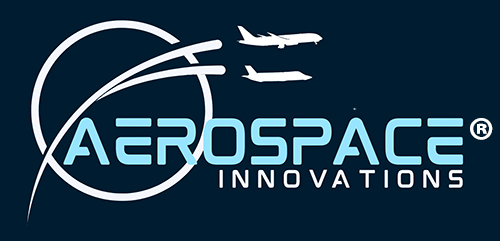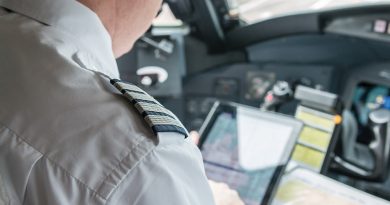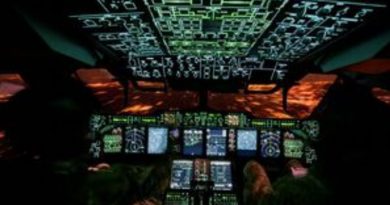CAE: An Innovative Company at the Cutting Edge of Cool
In a recent edition of Aerospace Innovations, we covered the official opening of CAE’s Air Traffic Services Training Centre (ATSTC) on its Montreal campus, adjacent to Montréal–Pierre Elliott Trudeau International Airport. But there was a lot more for this reporter — and other members of the global aerospace media — to see at the facility, which also happens to be where CAE designs and manufactures its Full-Flight Simulators (FFSs).
In this story, we’ll take you inside that operation to show why CAE truly is an innovative company at the cutting edge of cool.
Humble Beginnings
Today, CAE is a dominant force in the simulator manufacturing and aviation training markets. For decades, its hyper-realistic, six-axis Full-Flight Simulators have been standard issue at the world’s major airlines and aviation training facilities. Small wonder. Having personally taken their Bombardier Global 7500 simulator into a near-vertical climb during this media tour — and terrifying myself in the process, thanks to the simulator’s realism — I can say that being in a CAE FFS truly is the next best thing to actual flight.
Yet the company started humbly in an empty hangar at Saint-Hubert Airport (now Montreal Metropolitan Airport) in Longueuil, Quebec, on Saint Patrick’s Day, 1947. Back then, it was known as Canadian Aviation Electronics Ltd. and employed just 18 people. CAE was founded by retired RCAF officer Ken Patrick, who wanted to “create something Canadian and take advantage of a war-trained team that was extremely innovative and very technology-intensive.”
In those early days, CAE took on whatever work it could to survive. This included installing antenna farms in Canada’s far north for the RCAF and repairing ground-based communications equipment. But that’s not all — CAE also built moisture detectors for grain storage, Geiger counters to detect radiation, and even, for a while, consumer television sets.
The company’s big break came in 1952 when the RCAF hired CAE to build a simulator for the CF-100 Canuck, a Canadian twin-engine interceptor/fighter made by Avro Canada (which later designed the iconic Avro Arrow). CAE equipped this trainer with highly advanced technology to simulate radar targets and score weapons discharges. That success led to a DC-6B simulator for Canadian Pacific Airlines, and later to F-104 Starfighter simulators for the RCAF in the 1960s—so good that five other NATO countries bought 26 of them. CAE was on its way to becoming a simulation powerhouse in both civil and defence aviation.
A Gigantic Factory Floor
CAE’s Montreal campus is home to all things CAE — and a great place to watch planes landing and taking off at the adjacent airport. The heart of the site is the company’s massive factory floor, which spans nearly half a million square feet.
Our tour guide that day was Steve Levesque, CAE’s Vice President of Global Hardware Engineering, Manufacturing Quality, and Facilities. “We do everything here from fabrication to testing, logistics, shipping, and so forth,” he told us. “We’re starting from scratch: we even cut and bend our own metal.”
About 550 unionized workers keep the floor humming, running three shifts on weekdays and a fourth on weekends. Their workflow is laid out in stages, from raw materials and basic fabrication through to the assembly and testing of sophisticated simulators.
The most jaw-dropping sights are the towering Full-Flight Simulators, whose glossy structures resemble a Martian invasion force from The War of the Worlds. “These are our CAE 7000XR Series Full-Flight Simulators,” said Levesque. “From the outside, they all look the same. But the cockpits inside are totally customized for each customer. For instance, the FFS in front of us is for an Airbus A320, while the one down the line could be for a 737.”
To increase efficiency, CAE builds its simulators in five separate modules and integrates them later, rather than assembling each one sequentially. “When we built the previous version, we did them one at a time,” Levesque explained. “The problem with that was if one simulator took longer than expected, the whole line slowed down. That’s why we moved to a modular approach, it gives us the opportunity to manage our production rate and meet customer demand.”
The same approach applies to CAE’s 3000 Series helicopter simulators, which can be configured for aircraft like the CH-47 Chinook, CH-149 Cormorant, or Sikorsky NH-60 Black Hawk.
Everything is tested on site, which accelerates production and eliminates the cost and delay of shipping parts elsewhere. At a time when cross-border tariffs are pushing up prices, this self-contained setup is good news for both CAE and its clients.
Apple Vision Pro + CAE Software = The Ultimate VR/AR Training Solution
Apple’s Vision Pro headset is sleek, wireless, and powerful—just what you’d expect from the tech giant. Now, imagine what happens when CAE integrates this VR/AR marvel with its own pilot training application.
The result? A fully interactive cockpit where trainees can operate switches and instruments using hand gestures. The system can place students in a fully immersive environment or show a stripped-down cockpit with visibility into the classroom around them. It’s flexible, responsive, and impressively realistic.
CAE’s Director of Incubation, Erick Fortin, was my guide into this hybrid training world. “Our goal was to create a virtual flight deck that allows students to train realistically, by making the same hand motions they’d use in a real aircraft,” he said. “We wanted to get away from handheld controllers—they’re just not realistic.”
The AR/VR trainer guides students through sequences to prepare for and execute a flight. What surprised me most was how quickly my brain accepted the experience as real. It took little time to master the hand gestures needed to interact with the cockpit. This wasn’t a video game pretending to be a simulator—it was the real deal.
Harnessing the Electric Revolution
CAE’s training programs aren’t limited to simulators. The company also provides hands-on flight instruction using a fleet of about 60 Piper Archer single-prop aircraft. Of these, 48 are based at CAE’s Phoenix Aviation Academy in Mesa, Arizona, where many airline pilots begin their careers. The fleet also includes eight Piper Seminoles, seven Cirrus SR20s, two Cessna Citation CJ1s, and two Diamond DA20s.
Knowing that electric propulsion is the future, CAE is developing a retrofit kit for the Piper Archer, based on the EASA-certified Safran ENGINeUS 100 electric engine. Several of these aircraft, in various states of disassembly, can be found inside the Montreal facility.
Mukund Patel, CAE’s Design Lead for Electric Aircraft, described the process. “We’ve taken out everything unnecessary for electric flight—gasoline engine, fuel tanks, related systems,” he said. Batteries will be installed in the wings and behind the pilot, but they currently require so much space that CAE is converting the four-seater into a two-seater.
Once the battery layout is finalized, CAE will install the electric engine, a new propeller, a cowling, and supporting avionics. Everything must be safe, balanced, and efficient enough to fly. “We’re still in the detailed design phase,” Patel said. “We completed a preliminary design review last year. That helped define what we’re trying to achieve.”
Willing to Take Risks
If successful, CAE hopes to electrify a portion of its own training fleet—and eventually market an electric retrofit kit for the worldwide Piper Archer trainer fleet. The potential market is huge. If the performance is right and the price is advantageous, many piston-powered aircraft owners would likely consider switching to electric.
It’s a bold leap. But then again, CAE has taken bold leaps before, starting with that first simulator in 1952. And their recent entry into air traffic control training with the ATSTC is another big one.
Risk-taking is part of CAE’s DNA. Just ask anyone who remembers when the company tried to make TVs. That didn’t pan out, but most of their risks have paid off—enough to turn CAE into one of the world’s most successful aviation firms.
That’s why I expect CAE to stay at the cutting edge of cool — whether in flight simulation, aviation training, electric aircraft, or whatever else they dream up next. I’ve seen the future on their factory floor, and I am impressed.
By James Careless




